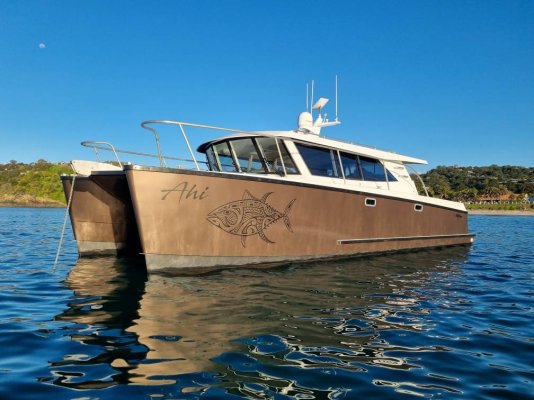jbinbi
Senior Member
So I am going to move from sail to power. This is for coastal cruising. I have no need/desire to do 30kts, but I don't want to limit myself to displacement speeds only. If I want to do 15-20kts, I want to be able to do that.
When I go sailing in 15-20kts of wind with 2-4' seas, the powerboaters at the dock look at me like I am insane! I am hoping that I could find a non displacement boat that could handle this ok, like if I wanted to go from Montauk to Atlantic City on the direct diagonal. I am not looking to cross the oceans.
Saw a Krogen Express at the show which would be the perfect boat except it is 50' and $2M. Nord, Krogen etc are out since they don't meet the speed, so conventional trawlers are out.
Looking for something that is between say 35-40', can do a min of 15kts, but can handle something other than just calm waters (my buddy with a searay sundancer 32 will only go from newport to block island if there is nothing more than a chop, not real seas). So searays and those types are out.
Could someone list some brands? Have been thinking lots about FP 37 powercat. Someone on cruisersforum went from 44' sailing cat to this, ran it on 1 engine for economy at 6kts, but also would run at 17kts when needed. But he sold it after 2 years and is no longer on the forums to ask why.
When I go sailing in 15-20kts of wind with 2-4' seas, the powerboaters at the dock look at me like I am insane! I am hoping that I could find a non displacement boat that could handle this ok, like if I wanted to go from Montauk to Atlantic City on the direct diagonal. I am not looking to cross the oceans.
Saw a Krogen Express at the show which would be the perfect boat except it is 50' and $2M. Nord, Krogen etc are out since they don't meet the speed, so conventional trawlers are out.
Looking for something that is between say 35-40', can do a min of 15kts, but can handle something other than just calm waters (my buddy with a searay sundancer 32 will only go from newport to block island if there is nothing more than a chop, not real seas). So searays and those types are out.
Could someone list some brands? Have been thinking lots about FP 37 powercat. Someone on cruisersforum went from 44' sailing cat to this, ran it on 1 engine for economy at 6kts, but also would run at 17kts when needed. But he sold it after 2 years and is no longer on the forums to ask why.


